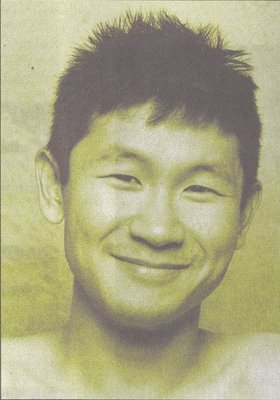
The interrobang (/ɪn'tɛrəbæŋ/) (‽) is a nonstandard English-language punctuation mark intended to combine the functions of the question mark (also called the interrogative point) and the exclamation mark or exclamation point (known in printers' jargon as the bang). The typographical character is a superimposition of those two marks. The same effect is also frequently achieved by using both, for example, "How could you do such a thing!?" or "How could you do such a thing?!"
American Martin K. Speckter invented the interrobang in 1962. As the head of an advertising agency, Speckter believed that advertisements would look better if copywriters conveyed surprised rhetorical questions using a single mark. He proposed the concept of a single punctuation mark in an article in the magazine TYPEtalks. Speckter solicited possible names for the new character from readers. Contenders included rhet, exclarotive, and exclamaquest, but he settled on interrobang. He chose the name to reference the punctuation marks that inspired it: interrogatio is Latin for "a rhetorical question" or "cross-examination"; bang is printers' slang for the exclamation point. Graphic treatments for the new mark were also submitted in response to the article.
In 1966, Richard Isbell of American Type Founders issued the Americana typeface and included the interrobang as one of the characters. In 1968, an interrobang key was available on some Remington typewriters. During the 1970s, it was possible to buy replacement interrobang keycaps and strikers for some Smith-Corona typewriters. The interrobang was in vogue for much of the 1960s, with the word 'interrobang' appearing in some dictionaries and the mark itself being featured in magazine and newspaper articles.
The interrobang failed to amount to much more than a fad, however. It has not become a standard punctuation mark. Although most fonts do not include the interrobang, it has not disappeared: Microsoft provides several versions of the interrobang character as part of the Wingdings 2 character set ( on the }/] and the ~/` keys) available with Microsoft Office.[4] It was accepted into Unicode and is present in several fonts, including Lucida Sans Unicode, Arial Unicode MS, and Calibri, the default font in the new Office 2007 suite.
The French equivalent is "point exclarrogatif", expressing a similar idea - the fusion between "point d'interrogation" (?) and "point d'exclamation" (!).
A reverse and upside down interrobang (combining ¿ and ¡, Unicode character: ⸘), suitable for starting phrases in Spanish, Asturian, and Galician, is called by some a gnaborretni (interrobang backwards). Unicode encodes this character at the code point U+2E18. In current practice, interrobang-like emphatic ambiguity in Hispanic languages is usually achieved by including both sets of punctuation marks one inside the other (¿¡Verdad!? or ¡¿Verdad?!)[6]. Older usage, still official but not widespread, recommended mixing the punctuation marks: ¡Verdad? or ¿Verdad!


No comments:
Post a Comment